Unit – 2
Sequence and series
Q1) Check whether the series  is convergent or divergent. Find its value in case of convergent.
is convergent or divergent. Find its value in case of convergent.
A1) The general formula for this series is given by,
Sn =  =
=  )
)
We get,
 ) = 3/2
) = 3/2
Hence the series is convergent and its values is 3/2.
Q2) Check whether the following series is convergent or divergent. If convergent, find its value.

A2) n’th term of the series will be,



 ] = ½
] = ½
Q3) Test the convergence of the following series:

A3)



Here we take,


Which not zero and finite,
So, by comparison test, and
and  both converges or diverges, but by p-series test
both converges or diverges, but by p-series test

Is convergent. so that  is convergent.
is convergent.
Q4) Test the convergence of the following series.

A4) We have 
First, we will find  and the
and the 


And
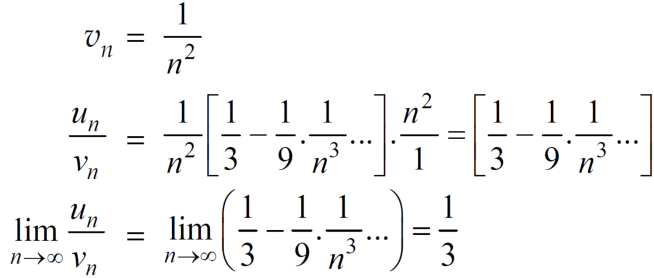
Here, we can see that, the limit is finite and not zero,
Therefore,  and
and  converges or diverges together.
converges or diverges together.
Since  is of the form
is of the form  where p = 2>1
where p = 2>1
So that, we can say that,
 is convergent, so that
is convergent, so that  will also be convergent.
will also be convergent.
Q5) Test the series:

A5) The series is,

Now,

Take,
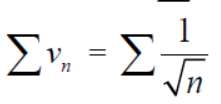
Which is finite and not zero.
Which is finite and not zero.
By comparison test  and
and  converge or diverge together.
converge or diverge together.
But,
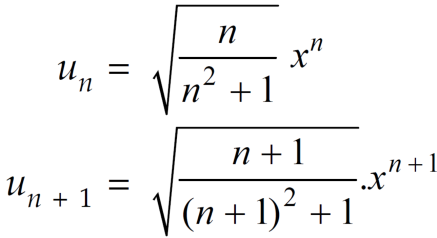
Is divergent. (p = ½)
So that  is divergent.
is divergent.
Q6) Test for the convergence of the n’th term of the series given below-

A6) We have,



Now, by D’Almbert ratio test  converges if
converges if  and diverges if
and diverges if 
At x = 1, this test fails.
Now, when x = 1
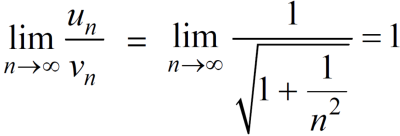

The limit is finite and not zero.
Then by comparison test,  converges or diverges together.
converges or diverges together.
Since  is the form of
is the form of  , in which
, in which 
Hence  diverges then
diverges then  will also diverge.
will also diverge.
Therefore, in the given series  converges if x<1 and diverges if x≥1
converges if x<1 and diverges if x≥1
Q7) If the series  converges, then find the value of x.
converges, then find the value of x.
A7) Here

Then,


By D’Almbert’s ratio test the series is convergent for | |<1 or |1-x|>1
|<1 or |1-x|>1
Or 
At x = 0, the series becomes-  which is divergent harmonic series.
which is divergent harmonic series.
At x = 2, the series becomes- 
It is an alternate series which is convergent by Leibnitz rule.
So that the series  .
.
Q8) Express the polynomial  in powers of (x-2).
in powers of (x-2).
A8)
Here we have,
f(x) = 
Differentiating the function w.r.t. x-
f’(x) = 
f’’(x) = 12x + 14
f’’’(x) = 12
f’’’’(x)=0
now using Taylor’s theorem-
 + ……. (1)
+ ……. (1)
Here we have, a = 2,
Put x = 2 in the derivatives of f(x), we get-
f (2) = 
f’ (2) = 
f’’ (2) = 12(2) +14 = 38
f’’’ (2) = 12 and f’’’’ (2) = 0
now put a = 2 and substitute the above values in equation (1), we get-


Q9) Expand  as far as the term in
as far as the term in  .
.
A9) We know that the power series for  is-
is-

Here we have to find- 
So that-


On solving, we get-


Q10) Find half range cosine series of  in the interval
in the interval  and hence deduce that
and hence deduce that
a) 
b) 
A10)
Here
 ;
; 
Hence, it’s half range cosine series is,
 … (1)
… (1)
Where











Hence equation (1) becomes,


 … (2)
… (2)
Put x = 0, we get


Hence the result
Put  we get,
we get,

i.e., 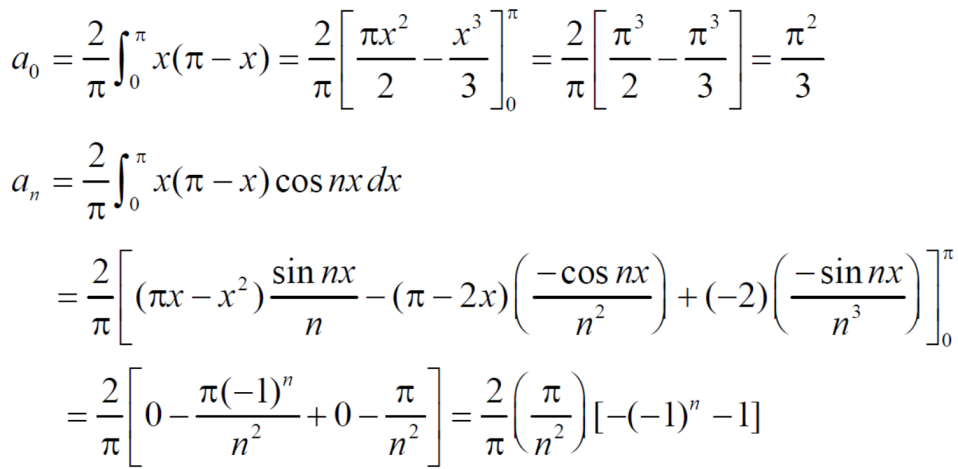
Q11) Prove that for 0 < x <
1. 
2. 
A11)
1. Half range series,

= 
= 0 when n is odd
So that-


Now by Parseval’s formula-

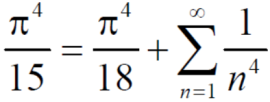

So that-
